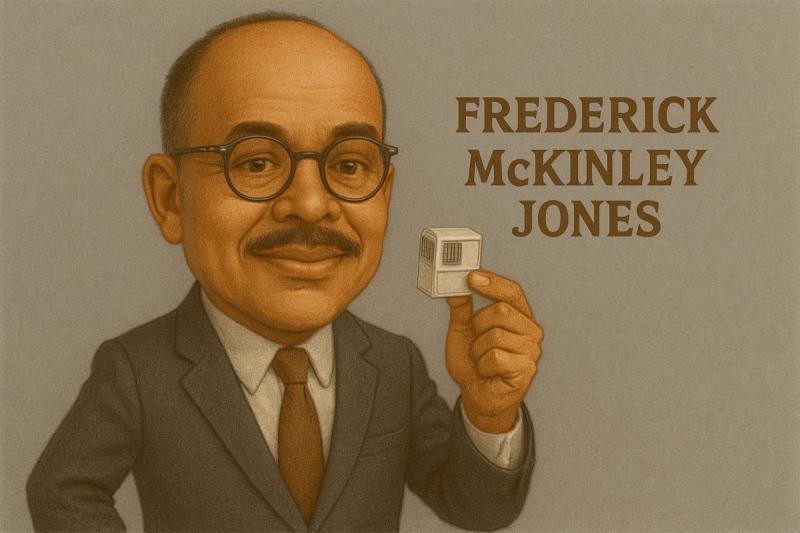Charles Waterton: The Eccentric Naturalist Who Rode Crocodiles and Created Conservation History
Ever heard of a guy who thought it was perfectly normal to ride a crocodile for fun? Or someone who'd suddenly drop to all fours at a fancy dinner party and start barking like a dog? Meet Charles Waterton, arguably history's most bizarre conservationist and the brilliant mind behind the world's first nature reserve. This dude was so ahead of his time in environmental protection that it's almost criminal how few people know his name today.
The Man Behind the Madness
Born in 1782 to a wealthy Catholic family in Yorkshire, England, Waterton wasn't your typical aristocrat. Instead of obsessing over property and politics, he developed an intense fascination with wildlife from an early age. His family estate, Walton Hall, became his playground for exploring nature.
What made Waterton truly unique wasn't just his love for animals – it was his complete disregard for conventional Victorian behavior. While his contemporaries were sipping tea and discussing property values, Waterton was climbing trees, wrestling with wildlife, and developing the kind of intimate knowledge of nature that most naturalists could only dream about.
Riding Crocodiles: Just Another Tuesday for Waterton
Let's talk about that crocodile-riding incident for a sec. During his explorations in South America (where he traveled extensively), Waterton spotted a 10-foot caiman in a river. Instead of, I don't know, running away like a normal person, he decided the logical thing to do was to jump on its back and ride it to shore.
His own account of the incident describes how he leapt onto the creature's back, seized its forelegs, and twisted them over its shoulders like handlebars. The locals who witnessed this stunt were understandably freaked out, but for Waterton, it was just another day in his wild life.
This wasn't just reckless thrill-seeking, though. Through these close encounters, he studied animal behavior in ways that were revolutionary for his time. His approach was basically: "Want to understand an animal? Get uncomfortably close to it."
Dinner Party Dog Impersonations and Other Social "Skills"
If you thought the crocodile riding was weird, wait till you hear about his social life. Waterton was notorious for suddenly dropping to all fours at formal dinner parties and running around barking like a dog. He'd growl at guests, sniff around table legs, and generally cause the kind of scene that would get most people permanently struck off the Victorian guest list.
On other occasions, he'd entertain (or terrify) guests by climbing to the top of chairs or cabinets and staying perfectly still like a statue. Sometimes he'd perch on a door and jump down onto unsuspecting visitors.
Was this behavior eccentric? Absolutely. But there was often method to his madness. His animal impersonations came from years of closely observing wildlife, and he used these performances to demonstrate animal behaviors to others – albeit in highly unconventional settings.
The World's First Nature Reserve: Waterton's Greatest Legacy
For all his oddities, Waterton's greatest achievement was creating what many consider the world's first nature reserve in 1821 – a full 51 years before Yellowstone became America's first national park.
Frustrated by hunters and poachers disturbing wildlife on his family estate, Waterton built a 3-mile long, 9-foot high stone wall around Walton Hall, creating a protected sanctuary where animals could live undisturbed. This wasn't just some rich guy's pet project – it was a revolutionary concept that would later become the foundation of modern conservation efforts.
Inside his sanctuary, Waterton established strict rules: no hunting, no trapping, and minimal human interference. He created the world's first bird boxes to encourage nesting and developed innovative methods for studying wildlife without harming them.
The wall cost him today's equivalent of about $175,000 – a massive investment that demonstrated his commitment to conservation wasn't just talk. As he wrote: "The poor fowls which I so carefully protect will find themselves in enclosed premises where none dare to molest them."
Scientific Contributions That Actually Mattered
Beyond the crocodile rodeos and dog impressions, Waterton made legitimate scientific contributions. His pioneering work in taxidermy revolutionized the field, as he developed preservation methods that didn't rely on toxic substances like mercury and arsenic.
His technique, known as "Waterton's method," allowed specimens to maintain their natural shape much better than previous methods. Some of his preserved specimens still exist today in museums, looking remarkably lifelike almost two centuries later.
He also wrote "Wanderings in South America," a book documenting his explorations that influenced Charles Darwin and Alfred Russel Wallace. His detailed observations about habitat destruction were incredibly prescient, warning about environmental degradation long before it became a mainstream concern.
The Method Behind the Madness
Despite his eccentric behavior, Waterton wasn't crazy – he was just wildly passionate and utterly unconcerned with social norms. His weird antics often had purpose:
• His barefoot walks through the estate (even in winter) helped him move silently to observe wildlife
• His tree-climbing abilities allowed him to study birds in their natural habitats
• Even his weird dinner party behaviors often served as educational demonstrations about animal behavior
In many ways, his eccentricity freed him from the constraints of conventional thinking, allowing him to develop conservation ideas that were centuries ahead of their time.
A Legacy Worth Remembering
Charles Waterton died in 1865 after falling from a branch while trying to build a bird nest at age 83 (which is honestly the most on-brand way he could have gone). His nature reserve continued for decades after his death, though sadly, much of it was later destroyed by industrial development.
What remains, however, is the blueprint for every protected wildlife area that followed. From Yellowstone to the Serengeti, modern conservation owes a debt to this bizarre Englishman who thought riding crocodiles was a perfectly reasonable hobby.
In an age where we're facing unprecedented environmental challenges, maybe we need more people with Waterton's level of commitment and willingness to break from convention. Not necessarily the dinner-party-dog-impersonation part, but definitely his radical dedication to protecting the natural world.
So next time you visit a nature reserve or national park, spare a thought for Charles Waterton – the crocodile-riding, dog-impersonating weirdo who helped make it all possible. Sometimes the most important innovations come from the strangest minds, and conservation is no exception. :)



